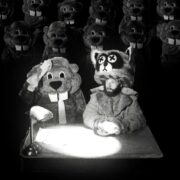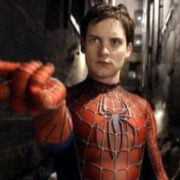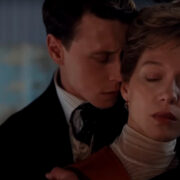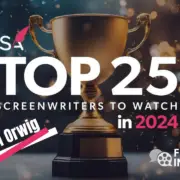I SAW THE TV GLOW: We’re All Going To The Pink Opaque

Lee Jutton has directed short films starring a killer toaster,…
Jane Schoenbrun’s first narrative feature, We’re All Going to the World’s Fair, delves deep into the dark world of creepypasta to tell the tale of one teenager’s descent down an online rabbit hole where it becomes hard to tell where the zeroes and ones end and real life begins. The film filters complicated issues related to loneliness and identity, including gender dysphoria, through the screens that have molded the coming of age of nearly every millennial with Internet access. The result is an admittedly lo-fi but undeniably affecting horror flick that upon its release immediately signaled Schoenbrun as a screen storyteller to watch.
Because of this, Schoenbrun’s next feature has been arguably one of the most anticipated films of this year. Fortunately, I Saw the TV Glow lives up to the hype: an intensely Lynchian horror film that delivers on the promise Schoenbrun showed in We’re All Going to the World’s Fair while spinning a stunning, shimmering tale of teenage angst, suburban ennui, queer identity, and the solace sought in the strange world of a mysterious television show.
Darkened Room
Gloomy and introverted seventh-grader Owen (Ian Foreman) is flipping channels alone one night in the mid-1990s when he comes across an ad for a late-night television show that airs on the aptly named Young Adult Network. Called The Pink Opaque, this supernatural drama tells the story of two teenagers, Isabel (Helena Howard) and Tara (Lindsey Jordan), who meet at summer camp and discover they share a psychic connection. Said connection gives them the power to sense and fight off various monsters of the week, all of whom are in the service of the show’s “big bad,” an infernal entity known as Mr. Melancholy. (If you grew up obsessing over mythology-heavy shows like Twin Peaks, The X-Files, Buffy the Vampire Slayer, or the rebooted Doctor Who, you’ll find The Pink Opaque quite familiar in a charming way.)
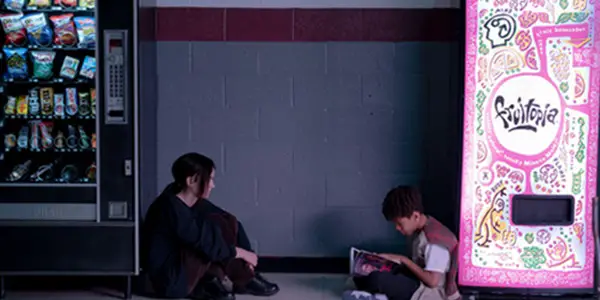
While Owen immediately falls under the spell of The Pink Opaque, he’s not allowed to stay up late enough to watch it. So, when he spots equally gloomy and introverted ninth-grader Maddy (Brigette Lundy-Paine) reading the show’s official episode guide, he summons the courage to ask her about it. Soon, he’s sneaking out at night to watch the show with Maddy, who also tapes episodes and leaves them for Owen to watch later. Even after the show is canceled, Owen can’t help but watch these tapes over and over again, overwhelmed by the feeling that the world of The Pink Opaque is far more vibrant and real than his waking life.
Time passes and Owen ages into a young adult (Justice Smith) working a dead-end job who still hasn’t been able to leave behind the unresolved world of The Pink Opaque. Maddy has mysteriously disappeared and his beloved mother (Danielle Deadwyler) has died of cancer, leaving him alone in the world save for a stepfather (Fred Durst, of all people!) who is so cold that he may as well be made of stone. However, all that changes when Maddy suddenly reappears and informs Owen that the world of The Pink Opaque is far more real than they had ever thought. But is Maddy telling the truth, or has her nostalgia for the show so totally consumed her identity that she’s convinced herself that it is real just to survive?
Wake in Fright
As with We’re All Going to the World’s Fair, Schoenbrun’s perspective as a trans and nonbinary filmmaker, particularly the feeling of wrestling with one’s gender identity, runs like a streak of neon light through every frame of I Saw the TV Glow. Maddy warns Owen from the start of their relationship that she’s attracted to girls; her queerness leads her only female friend to abandon her, furthering Maddy’s need to seek solace in the idealized version of sisterhood represented in The Pink Opaque, in which Isabel and Tara’s connection is so strong that it can be sensed across the psychic plane. Meanwhile, Owen’s queer identity emerges much more slowly due to his reluctance to wake up to the reality of who he really is; he would rather sleepwalk through a safe and uneventful life rather than take a risk and start anew as his most authentic self.
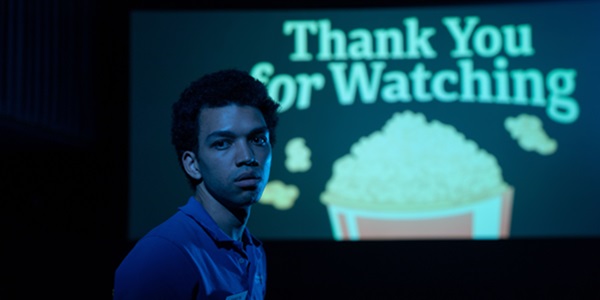
Even if you don’t identify as queer, you can likely relate to such a struggle, especially if—like Owen and Maddy, as well as Casey of We’re All Going to the World’s Fair—you’ve felt suffocated by the conformity of the suburbs and desperately in need of a way to break free. For Casey, that freedom is found in the World’s Fair challenge and documenting the changes she seems to be undergoing via her video blog; for Maddy and Owen, it is in their devoted fandom and their inability to accept the unpleasant, unresolved ending of their favorite television show. In both films, Schoenbrun depicts the comforts as well as the dangers inherent in submerging yourself in media to the point that you lose touch with the real world. After all, living vicariously through something else can be fun for a while, but it’s no way to really live—not if you don’t want to be stuck in stasis for the rest of your life.
The vast majority of I Saw the TV Glow takes place at night, which is captured in all its hazy, haunted liminality by cinematographer Eric Yue. Inside, the characters’ faces are lit by the otherworldly glow of their old-fashioned television sets; outside, the chalk graffiti that litters the streets seems almost luminous, lighting Owen’s way as he traverses the streets in secret. The show’s soundtrack has the same dreamlike effect, courtesy of We’re All Going to the World’s Fair composer Alex G and a host of buzzy alt-pop musicians—including King Woman and Sloppy Jane, who perform in the film during a surreal nightclub scene that feels straight out of Twin Peaks: The Return. (Indeed, so much of I Saw the TV Glow bears the strange stamp of David Lynch’s influence, yet the film tells such a unique and affecting story that one cannot accuse it of being derivative.) It’s not the kind of music I tend to listen to, but it suits the tone of the film perfectly, adding to the feeling of unreality that pervades nearly every scene.
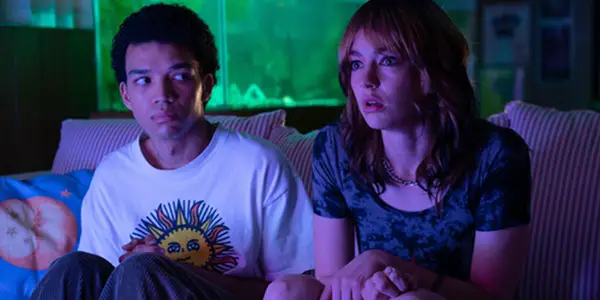
Still, all these amazing images and sounds—some of which are truly nightmarish—wouldn’t have the same effect if the film’s performances were subpar. Fortunately, I Saw the TV Glow has two wonderful leads in Smith, whose spark has lit up everything from the short-lived Netflix series The Get Down to Detective Pikachu, and Lundy-Paine, who I first noticed in Bill & Ted Face the Music and who utterly impresses here, especially in a lengthy monologue that oozes pain, like a gaping wound that refuses to heal. That both lead actors are queer no doubt adds to the incredible authenticity that both of them bring to their roles; they fully embody these characters to such a degree that you can almost forget that what you’re watching is a fictional film…thus succumbing to the very same danger they do onscreen.
Conclusion
With I Saw the TV Glow, Schoenbrun stakes their claim as the preeminent chronicler of those specific horrors inherent in coming of age as a millennial.
I Saw the TV Glow expands to theaters across the United States on May 17, 2024.
Does content like this matter to you?
Become a Member and support film journalism. Unlock access to all of Film Inquiry`s great articles. Join a community of like-minded readers who are passionate about cinema - get access to our private members Network, give back to independent filmmakers, and more.
Lee Jutton has directed short films starring a killer toaster, a killer Christmas tree, and a not-killer leopard. Her writing has appeared in publications such as Film School Rejects, Bitch: A Feminist Response to Pop Culture, Bitch Flicks, TV Fanatic, and Just Press Play. When not watching, making, or writing about films, she can usually be found on Twitter obsessing over soccer, BTS, and her cat.




